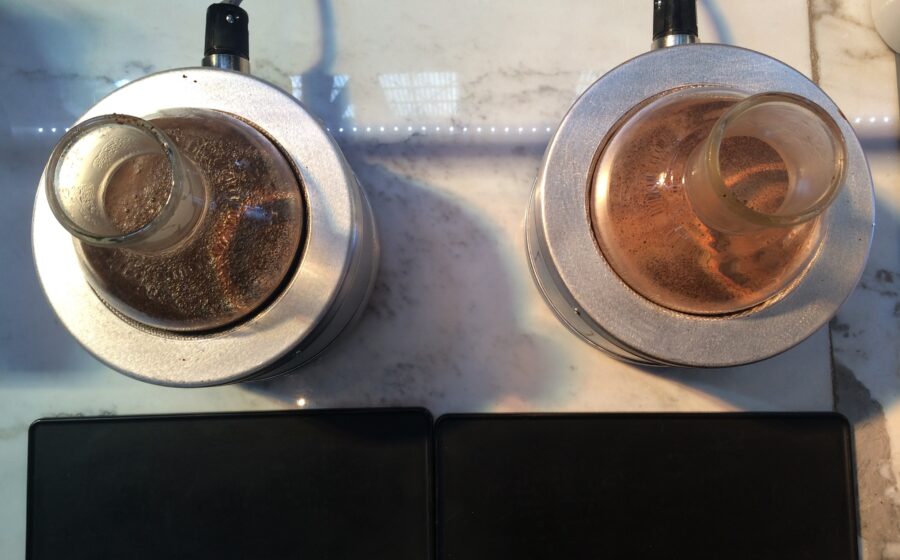[C]olorado’s Boxcar Coffee Roasters (named for derby racing, not train cars) encountered a dilemma when they first set up shop in 2010: elevation. Their flagship location in Boulder is at 5,430 feet, their second location, opened in 2013, at Denver’s 5,280 feet. Owners Vajra and Cara Rich had moved to Boulder from Vashon Island, a ferry ride out from Seattle, and high-altitude brewing was new to them. Boulder’s low boiling temperature meant thinking differently about brewed coffee if the Riches wanted to do justice to their carefully roasted beans. The solution, The Boilermakr, was inspired by the elevation itself, when Vajra made coffee over a campfire in the state’s revered Rocky Mountains, and realized he had hit upon great taste.
Every day at the shops, three different roasts are put through the Boilermakr for Boxcar’s “drip” coffee customers. In the space age-looking system, which sits behind a glass case on the counter, coarse, pre-doused (a splash of water gets off-gassing, or the “bloom” out of the way) grounds bubble in spherical carafes placed in boilers. The set-up looks like it belongs in a laboratory, not a café. When the water hits 202 Fahrenheit, the carafes are taken off their respective boilers and iced is added (though not a lot). The ice serves two functions: it curtails the extraction before it goes to far, and as the hot grounds soak up the cooler water, which is more dense, they sink to the bottom of the carafe, making for a clean cup and easy straining. The brew is then poured (and filtered of particles) and served. Boiling coffee might ruin it elsewhere, causing bitterness and bite, but a mile above sea level, it works great.
Boiling coffee might ruin it elsewhere, causing bitterness and bite, but a mile above sea level, it works great.
“The Boilermakr is a process born from the fire, literally,” says Boxcar director of operations Ben Thomas about the roaster’s bespoke brewing device. With grounds boiled over high heat to an optimum extraction, the Boilermakr method is really just modern, indoor cowboy coffee. “While it may seem to be a crude environment for coffee brewing,” says Thomas, “some amazing results were achieved over those fires.”
Thomas admits that elevation presents challenges across the board. Low atmospheric pressure can effect brewing and roasting, too, he says, and has an interesting effect on crema. “With fresh coffee and no pre-infusion the crema acts not too dissimilar to a mouth full of pop rocks,” says Thomas. “It is exciting at first but in an instant it’s all gone and you are left felling a little strange as to what just happened.” It boils down to expectation; coffee above sea level is different no matter what. But Boxcar is making that challenge work by embracing it.
While based on the most basic of brewing styles, the Boilermakr is the focal point of Boxcar’s bars, inviting curious stares, and injecting consumer education into everyday transactions. Thomas says one of the greatest advantages of the Boilermakr, aside from consistently brewed coffee, is the experience it affords. “The Boilermakr serves as a great platform to flex customer curiosity and create a more educated consumer,” he says. What could have been a drawback of brewing near the Rockies became an advantage to the young company, a show of regional pride and brewing prowess.
—Regan Crisp is Fresh Cup’s associate editor. Photos courtesy Boxcar Coffee Roasters.

















